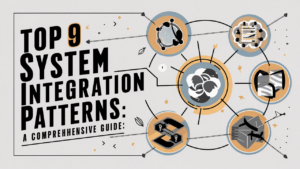Creating a well-structured REST API is an essential part of building modern web services. REST (Representational State Transfer) offers a powerful and flexible architecture that enables the seamless interaction between different software components over the internet. However, designing a REST API can be complex. This guide will walk you through the key principles, best practices, and design strategies for building robust REST APIs.
What is REST?
REST (Representational State Transfer) is an architectural style that outlines a set of constraints and principles for creating scalable and stateless web services. Unlike traditional web services, REST focuses on resources rather than actions. This means that when designing endpoints, you should think in terms of “resources” like /users or /products instead of actions like /getUsers.
REST APIs work using standard HTTP methods like GET, POST, PUT, DELETE, and PATCH to perform operations on these resources. The essence of RESTful architecture is its simplicity, scalability, and ability to use standard web protocols.
REST Constraints: Core Principles of REST API Design
To build a truly RESTful API, it’s important to follow the six REST constraints:
1. Client-Server Architecture
REST is built on a client-server architecture where the client and server operate independently. The client handles the user interface and user experience, while the server manages the data, logic, and storage. This separation of concerns simplifies client development and improves scalability. The client doesn’t need to know the implementation details of the server, allowing the server-side components to evolve independently.
2. Statelessness
Each API request from the client to the server must contain all the information needed for the server to fulfill that request. In other words, the server doesn’t store any client context between requests. This stateless nature of REST APIs offers several benefits:
Scalability: Servers can easily handle many simultaneous requests since they do not need to maintain session information.
Simplicity: Stateless interactions make the API more straightforward to understand and debug.
Example: When making an API call to retrieve user information, the request should include everything needed, such as the authentication token, without relying on the server to store user session details.
3. Cacheable
Responses from the server should indicate whether they are cacheable. Caching can significantly improve the performance and efficiency of a REST API by reducing the number of interactions between the client and server. Properly cached responses lower latency, decrease network traffic, and enhance the overall user experience.
4. Uniform Interface
A uniform interface is a key principle of REST that standardizes the way clients and servers interact. This uniformity enables the client to interact with the API in a consistent manner, regardless of the underlying implementation.
The uniform interface is defined by four main aspects:
Resource Identification: Every resource is uniquely identified by a URI (e.g., /users/123). This approach allows clients to interact with specific resources using the resource’s URI.
Resource Manipulation Through Representations: Clients can modify resources by sending representations (e.g., JSON, XML) to the server. The server processes these representations to perform the desired operations.
Self-Descriptive Messages: Requests and responses must include enough information for clients to process them. This includes using standardized media types (e.g., JSON) and HTTP status codes.
HATEOAS (Hypermedia as the Engine of Application State): Responses should contain links to related actions. For instance, a response containing user information could include a link to update that user, guiding clients on how to interact with the API.
5. Layered System
REST APIs should support a layered architecture, allowing for the separation of different concerns, such as security, caching, and data processing. In this structure, the client is unaware of whether it is interacting directly with the server, a load balancer, or an intermediary cache. This setup improves the scalability and security of the API by allowing layers to handle specific tasks independently
6. Code on Demand (Optional)
This optional constraint allows servers to send executable code (e.g., JavaScript) to the client to enhance their capabilities. Although not commonly used in REST APIs, this feature provides flexibility for adding dynamic functionalities to the client-side.
HTTP Methods: The Core Actions in REST APIs
REST APIs rely on standard HTTP methods to perform operations on resources. Each method serves a specific purpose:
-
GET: Retrieve data from a resource. GET is idempotent, meaning multiple identical requests will have the same effect.
-
POST: Create a new resource. The server responds with a status code (e.g., 201 Created) and a link to the newly created resource.
-
PUT: Update an existing resource or create it if it doesn’t exist. Like GET, PUT is also idempotent.
-
DELETE: Remove a resource. This method indicates the server should delete the specified resource.
-
PATCH: Partially update a resource. Unlike PUT, which replaces the entire resource, PATCH modifies only specific fields
Using HTTP Status Codes Effectively
Using the correct HTTP status codes is vital to REST API design, as it provides clients with clear feedback on their requests. Here are some common status codes and their meanings:
200 OK: The request was successful.
201 Created: A new resource was created.
400 Bad Request: The request was malformed or invalid.
401 Unauthorized: Authentication failed or was not provided.
404 Not Found: The requested resource doesn’t exist.
500 Internal Server Error: An unexpected error occurred on the server.
Best Practices for REST API Design
1. Use Nouns for Endpoints
When designing endpoints, use descriptive nouns instead of verbs. RESTful APIs are resource-oriented, so naming conventions should focus on the entity being accessed:
Correct: /products
Incorrect: /getProducts
2. Handle Versioning in URLs
APIs evolve over time, and changes can break backward compatibility. Therefore, it’s a good practice to include version numbers in the URL to indicate which version of the API the client is using:
Example: /api/v1/products
3. Implement Pagination for Large Datasets
To prevent overwhelming clients with too much data, use pagination for endpoints that return large datasets. This is commonly done using query parameters like limit and offset:
Example: /products?limit=20&offset=40
4. Rate Limiting
To ensure fair usage and prevent abuse, implement rate limiting. It controls the number of requests a client can make within a specified time frame, protecting the API from excessive traffic.
5. Standardize Error Responses
Provide consistent error responses that include a status code, error message, and any other relevant details to help clients troubleshoot issues.
6. Use JSON for API Responses
JSON is lightweight, easy to parse, and widely supported, making it the preferred format for REST API responses. Standardizing on JSON ensures clients can easily consume the API.
7. Always Use HTTPS
Always use HTTPS to encrypt data in transit and protect it from man-in-the-middle attacks. Security is paramount when designing APIs, especially when sensitive data is involved.
8. Implement Authentication and Authorization
Protect your API with authentication mechanisms like API keys or OAuth. This ensures that only authorized clients can access or modify resources.
Conclusion
Designing a REST API involves a careful balance of adhering to REST constraints, choosing the right HTTP methods, and implementing best practices to create a robust, scalable, and user-friendly service. By focusing on resources, using clear and consistent endpoints, managing state effectively, and prioritizing security, you can build an API that is not only easy to use but also maintainable and scalable.
Following these guidelines will help you create a REST API that developers find intuitive and reliable, promoting better interaction between your application and its users.
























